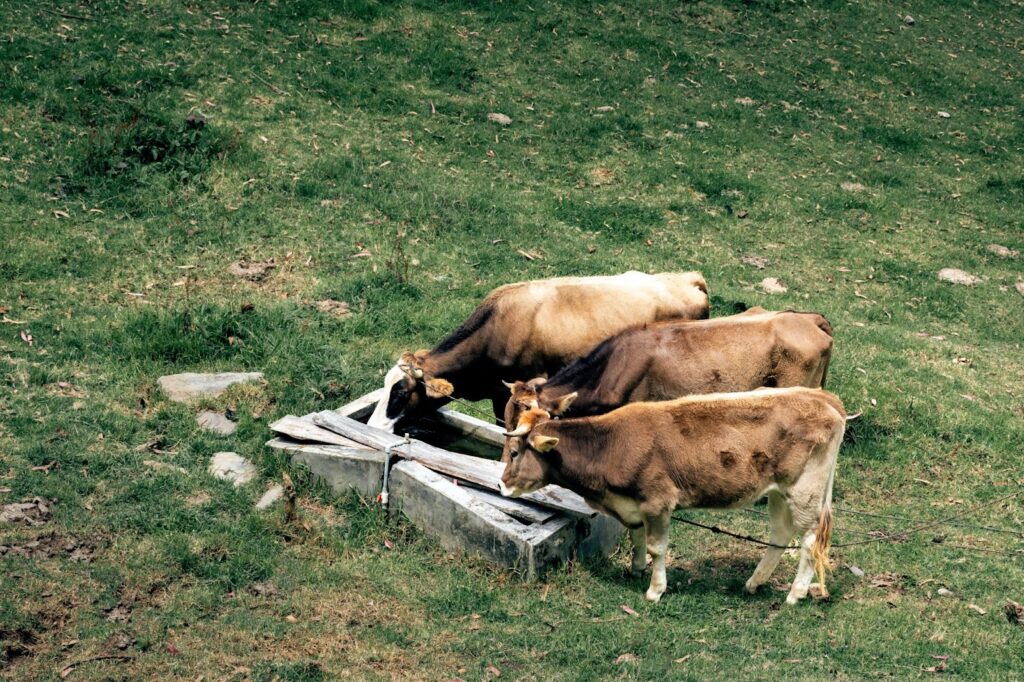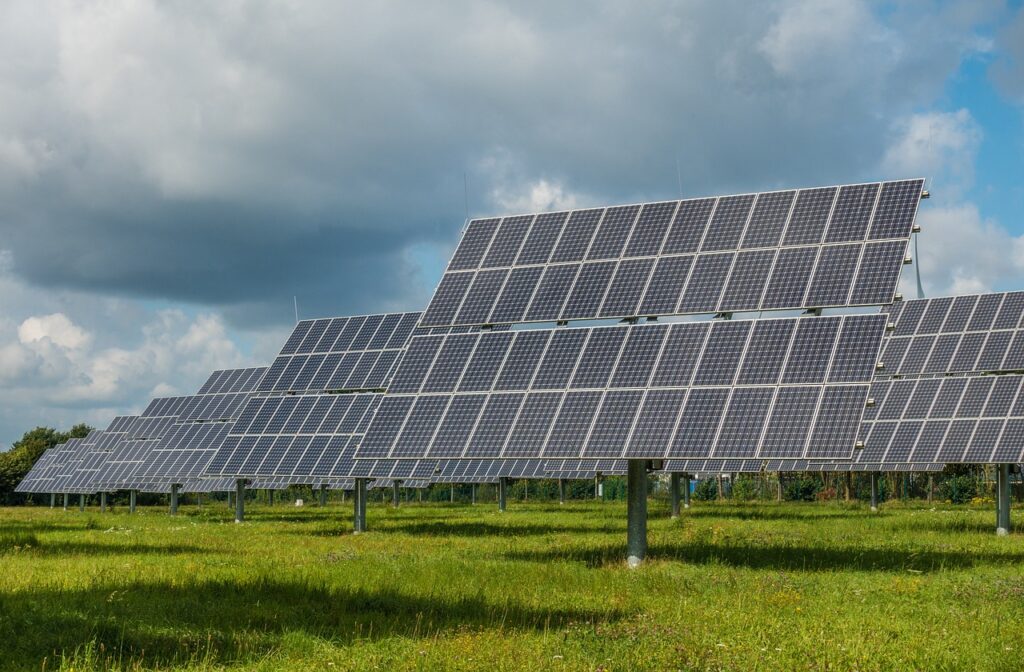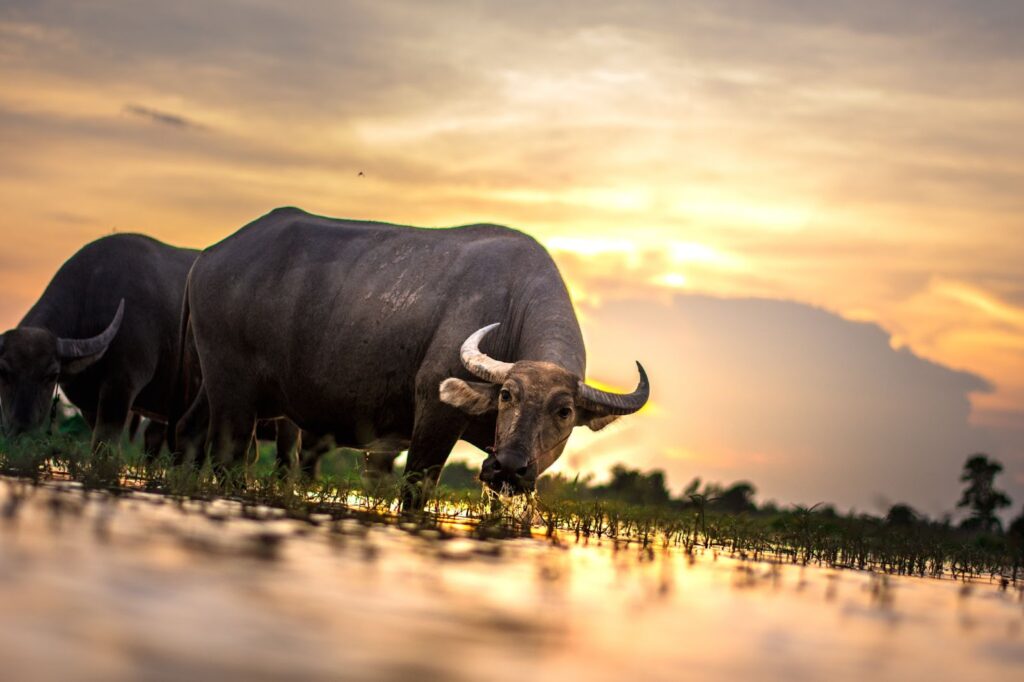
Colorado is big into beef. The state ranks 11th in the nation for total cattle numbers and beef is the number one commodity, with over 15,000 producers operating statewide.
With 31 million acres dedicated to agricultural use, ranchers can enjoy The Western Slope, The Plains Region, and The Rocky Mountains as idyllic places to raise their cattle.
But big business comes at a big cost. Feed is the largest expense for cow producers and accounts for a whopping 75% of a ranch’s operating costs. To add to the expense, in May 2022, the cost of feed rose 16% compared to the same period in 2021.
There’s little surprise that cattle ranchers are looking for ways to reduce their operating costs. While not a lot can be done about the price of feed, there is a way to significantly reduce electricity and diesel costs.
Solar energy is an incredibly versatile and clean source of power. And while cattle ranching has a fairly low electricity consumption compared with other types of farming, there are still massive savings to be had and benefits to enjoy.
Let’s explore this more.
In a Nutshell
- Solar power can reach remote areas and power electric fencing consistently
- Its remote reach is also beneficial for powering cattle watering systems
- Raising the solar panels higher off the ground will provide essential shade for cattle and reduce heat stress
- Solar energy can reduce your ranch’s energy bills by up to 96% if grid-connected and 100% if off-grid
- Solar energy is reliable and very rarely breaks down, protecting you from power blackouts and generator failures
- Installing solar will work to reduce your cattle ranch’s carbon footprint
- Combining solar power with agritourism can provide a lucrative opportunity
How Solar Energy Benefits a Cattle Ranch
Powers Electric Fencing

Cattle ranches are pretty big places, with Colorado’s largest ranches being over 150,000 acres. Even the smallest ranch will be at least 450 acres – that’s a lot of ground to cover and a huge amount of fencing to install to keep your animals safe.
And here’s where solar can step in and make things much easier.
Electric fencing is the preferred way to keep cows contained. This is because it’s cheap and easy to install and doesn’t really require anything more than fence posts and the electric wire.
However, powering the electric fences – particularly if you have many of them – poses a challenge. You either have to use expensive, polluting, and noisy generators, or small batteries that consistently need charging.
On the other hand, solar can be installed anywhere where there’s access to sunlight, which means your electric fence can be powered consistently and without having to recharge or refuel the power source. It’s pretty much a “set it and forget it” kinda deal.
Delivers Water to Remote Areas

Delivering water to your cattle can also pose a challenge because it typically means using an electrical pump system to carry the water to where it’s needed.
Solar energy can run your pumps and provide a constant and automatic supply of water to your thirsty cows. And when the sun is at its peak and it’s hot, you can rest assured that your solar panels will be working at maximum efficiency, so you won’t have to worry about a lack of power and a subsequent lack of water.
If you’re concerned that the solar panels won’t provide electricity during the hours of darkness, there’s a solution for that too. By installing a solar battery, you can retain the excess power the panels generate during the day and then use it at night.
That means your fencing stays on and your cows remain hydrated.
Provides Essential Shade for Cows

To get a good profit from your animals, they must be healthy. As a rancher, you already know that a cow is a sensitive beast and suffers when it gets too hot.
Heat stress can have very serious health implications for cattle, which is why providing them with enough shade is paramount. But when your ranch consists of wide open spaces, facilitating shade can be tricky.
A professor at the China Agricultural University conducted a study that estimated that between $1.69 and $2.36 billion is lost in the USA every year. The culprit? Cattle suffering from heat stress.
This is because the affliction affects the cows in the following ways:
- Decreased feed intake and subsequent weight loss
- Increased dehydration rates due to increased respiration and body temperatures
- Produces calves with decreased immune systems and low birth rate capacity
- Shorter gestation periods and lower pregnancy rates
- Increases likelihood of contracting a disease or dying
Solar energy provides a surprising solution. Rather than installing solar panels in an area on their own, a study by the University of Minnesota has found that raising them higher off the ground and allowing cattle to rest in the shade underneath provides great benefits.
The panels have to be raised high enough so that the cattle can’t rub up against them for a scratch (and risk damaging them) while being able to pass by underneath.
Since most agricultural solar systems are ground mounted anyway, this won’t pose much of a challenge, plus it means you don’t have to pick between using the space for your cows or giving it up for solar panels.
Reduces Energy Bills

Okay, so solar energy isn’t going to do much for the cost of feed, but it does have the ability to reduce your energy bills to almost nothing.
A grid-connected solar system can reduce energy bills by as much as 96%! This type of setup will generate enough power for you to use throughout the day, plus extra. This extra power flows into the grid and you get back energy credits in exchange.
Then, during dark hours when your panels are producing electricity, you can use those energy credits instead in a process called “net-metering.”
The reason you can’t reduce a grid-connected energy bill by 100% is that there are always other fees that must be paid in addition to consumption. Mind you, 96% is still pretty incredible, especially when you consider how long solar panels last (more than 25 years).
For example:
- A $2,000/month bill can be reduced to $80
- A $3,000/month bill can be reduced to $120
- A $5,000/month bill can be reduced to $200
The only way to get a $0 energy bill is if you opt for an off-grid system. This means your solar setup isn’t tied to the grid in any way whatsoever, so you don’t have to rely on a utility company for anything. In this circumstance, you can enjoy 100% free energy.
Protects From Blackouts

Blackouts are becoming increasingly common as Colorado’s ancient grid infrastructure is put under more strain and pressure. A business that experiences a blackout for a number of days can quickly lose millions, especially if the products are perishable.
A cattle ranch is uniquely placed in that it won’t suffer too much if the main power supply goes down. Since it’s likely you’re using batteries or generators to power the fencing and water pumps, a grid outage may affect you very little.
On the other hand, what happens if one of your generators fails? How tough would it be to get water to where it’s needed if the pumps are down? How long before your cows escape and wander off if the electric fencing goes down?
If you have solar energy, it’s highly unlikely you’ll ever find out the answers to these questions. Thanks to the constant and reliable stream of power your solar panels deliver, you don’t ever have to worry about blackouts becoming a thing.
For extra reassurance, Colorado enjoys over 300 days of sunshine each year, so plenty to keep your panels working efficiently. Even on cloudy days, your panels will still operate, but their efficiency may be slightly reduced.
Lessens Environmental Impact

Cows are not the most environmentally friendly animals on the planet. They are somewhat gassy and on average, each cow will produce 154 to 264 pounds of methane gas annually. That equates to between 17.63 lb and 48.5 lbs of CO2e per 2.205 lbs of live weight.
Many farmers and ranchers are keen to find ways to reduce their carbon footprint. Consumers want this as well, and we all need to do our bit to ensure the planet is safely passed on to future generations.
Solar energy is one way to reduce a farm’s carbon footprint. It won’t stop the cows from burping, but it will ensure your energy is coming from a clean and renewable source.
Provides Off-Grid AgriTourism Opportunities

Here’s an intriguing one. If you’re ever curious about how to increase the profitability of your ranch, then agritourism is something worth exploring.
Agritourism is the practice of tourists staying with local people in rural areas and on farms to learn about agricultural practices. Think of winery and vineyard tours – this is one of the most popular forms of agritourism.
It’s a thriving industry worth $33.8 billion in 2022 and is projected to reach $111.1 billion by 2032.
If you fancy a slice of the pie, then you need to have accommodation ready, and an off-grid cabin or ranch house will provide the rustic experience your guests are looking for.
Better still, off-grid accommodation can be placed anywhere on your ranch – great if you don’t want visitors too close by. And since it’ll run on solar power, it will hardly cost you anything to run, which provides an opportunity for extra profit.
Get In Touch With 8760 Solar

If you like the sound of these benefits, then we’d love to talk with you.
At 8760 Solar, we specialize in providing solar energy to Colorado’s farms, ranches, and agricultural businesses. We have deep experience and knowledge of agriculture and, therefore, can advise you on the best type of solar setup for your ranch.
Whether you’re looking for an on-grid or off-grid solution, we can come and run an analysis on your ranch to see what works best.
We’ll also help you apply for and take advantage of the many tax incentives and initiatives that are available for going solar.
Did you know you can apply for a REAP grant that will cover up to 50% of the cost of a solar system? And have you heard about the 30% ITC tax credit you can claim on your federal taxes?
Because of the abundance of incentives in Colorado, it’s entirely possible to get more than 100% return on investment in the first year alone, making a solar installation incredibly affordable.
Solar is the solution for securing our green energy future. If you’d like to know more, text “READY” to 719 470-0254 or contact us via email: sales@8760solar.com.
Frequently Asked Questions
Can You Graze Cattle Under Solar Panels?
You can graze cattle under solar panels and the shade the panels provide is very beneficial to cows as it helps reduce heat stress. You just have to ensure that the panels are raised high enough off the ground so that the cows can’t rub against them and potentially cause damage.
How Can Solar Energy Be Used on a Farm?
Solar energy can be used anywhere on a farm. It can be used to power all types of farm buildings and it’s especially beneficial for powering remote systems, such as irrigation and electric fencing.
What Are Some Challenges to Implementing Solar Grazing?
The main challenge of implementing solar grazing is the increased cost that comes with raising the solar panels. Cows like to scratch and rub against objects and they may damage a solar panel if they do this. To avoid the problem, the panels must be lifted high enough so the cow cannot reach it. This, of course, costs more than a standard installation and is more challenging to facilitate.
Can You Farm Under Solar Panels?
You can farm under solar panels and the practice – called “agrivoltaics” – has been popular across Europe and Asia for some time. The microclimate generated underneath the solar panels is great for shade-tolerant crops, and it enhances biodiversity, retains soil moisture, and prevents water runoff.
